
The shoulder-striped wainscot is a moth of the family Noctuidae. The species was first described by Carl Linnaeus in 1761. Some authors place it in the genus Mythimna. It is found throughout Europe and in Russia to the west of the Urals.
Wainscot is a panelling, often wooden, applied to an interior wall of a building.

Leucania obsoleta, the obscure wainscot, is a moth of the superfamily Noctuoidea. The species was first described by Jacob Hübner in 1803. It is found in Europe.

Leucania stenographa, commonly known as the sugar cane armyworm, is a moth of the family Noctuidae. It is found in Australia, New Zealand and the Cook Islands.
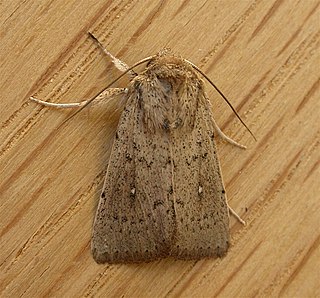
Leucania uda is a moth of the family Noctuidae. It is found in Australia.

Leucania is a genus of moths of the family Noctuidae first described by Ferdinand Ochsenheimer in 1816.

The Devonshire wainscot is a species of moth of the family Noctuidae. It is found in southern Europe, North Africa, Turkey, Israel, Lebanon.

Leucania loreyi, the cosmopolitan, false army worm or nightfeeding rice armyworm, is a moth of the family Noctuidae. It is found in most of African countries, the Indo-Australian subtropics and tropics of India, Sri Lanka, Myanmar, the eastern Palearctic realm, and the Near East and Middle East. The species was first described by Philogène Auguste Joseph Duponchel in 1827.

Leucania cruegeri is a moth of the family Noctuidae. It is found in Western Australia.
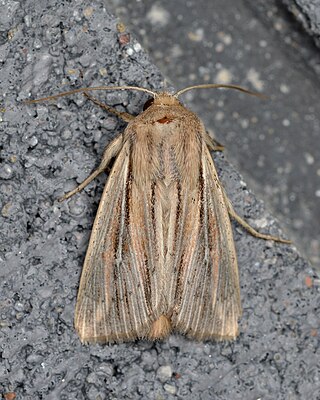
Leucania commoides, the comma wainscot or two-lined wainscot moth, is a species of cutworm or dart moth in the family Noctuidae. It was described by Achille Guenée in 1852 and is found in North America.
Leucania multilinea, the many-lined wainscot, is a species of cutworm or dart moth in the family Noctuidae. It is found in North America.
Eudicrana obumbrata is a species of fungus gnats in the family Mycetophilidae.

Leucania inermis, the unarmed wainscot, is a species of cutworm or dart moth in the family Noctuidae. It is found in North America.
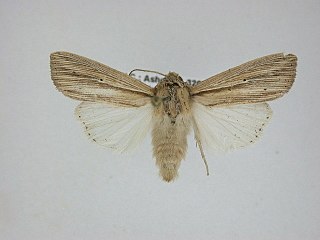
Leucania lapidaria is a species of cutworm or dart moth in the family Noctuidae. It is found in North America.
Leucania senescens is a species of cutworm or dart moth in the family Noctuidae. It is found in North America.

Leucania incognita is a species of cutworm or dart moth in the family Noctuidae first described by William Barnes and James Halliday McDunnough in 1918. It is found in North America.

Leucania adjuta, the adjutant wainscot, is a species of cutworm or dart moth in the family Noctuidae. It is found in North America.
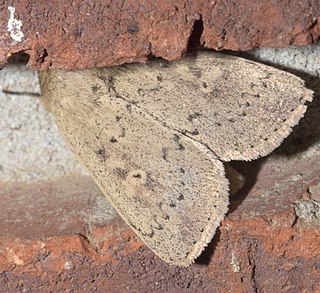
Leucania ursula, the ursula wainscot, is a species of cutworm or dart moth in the family Noctuidae. It is found in North America.
Leucania venalba is a moth of the family Noctuidae first described by Frederic Moore in 1867. It is found in Indo-Australian tropics of India, Sri Lanka, to Fiji and New Caledonia.
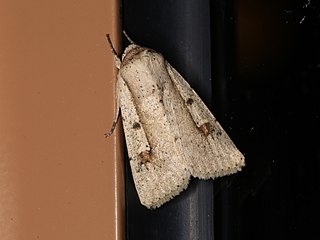
Leucania yu is a moth of the family Noctuidae first described by Achille Guenée in 1852. It is found in Oriental tropics of India, Sri Lanka, the Andaman Islands, Hong Kong, Indonesia, the Philippines, Taiwan east to Australia, Fiji and Tonga.
















